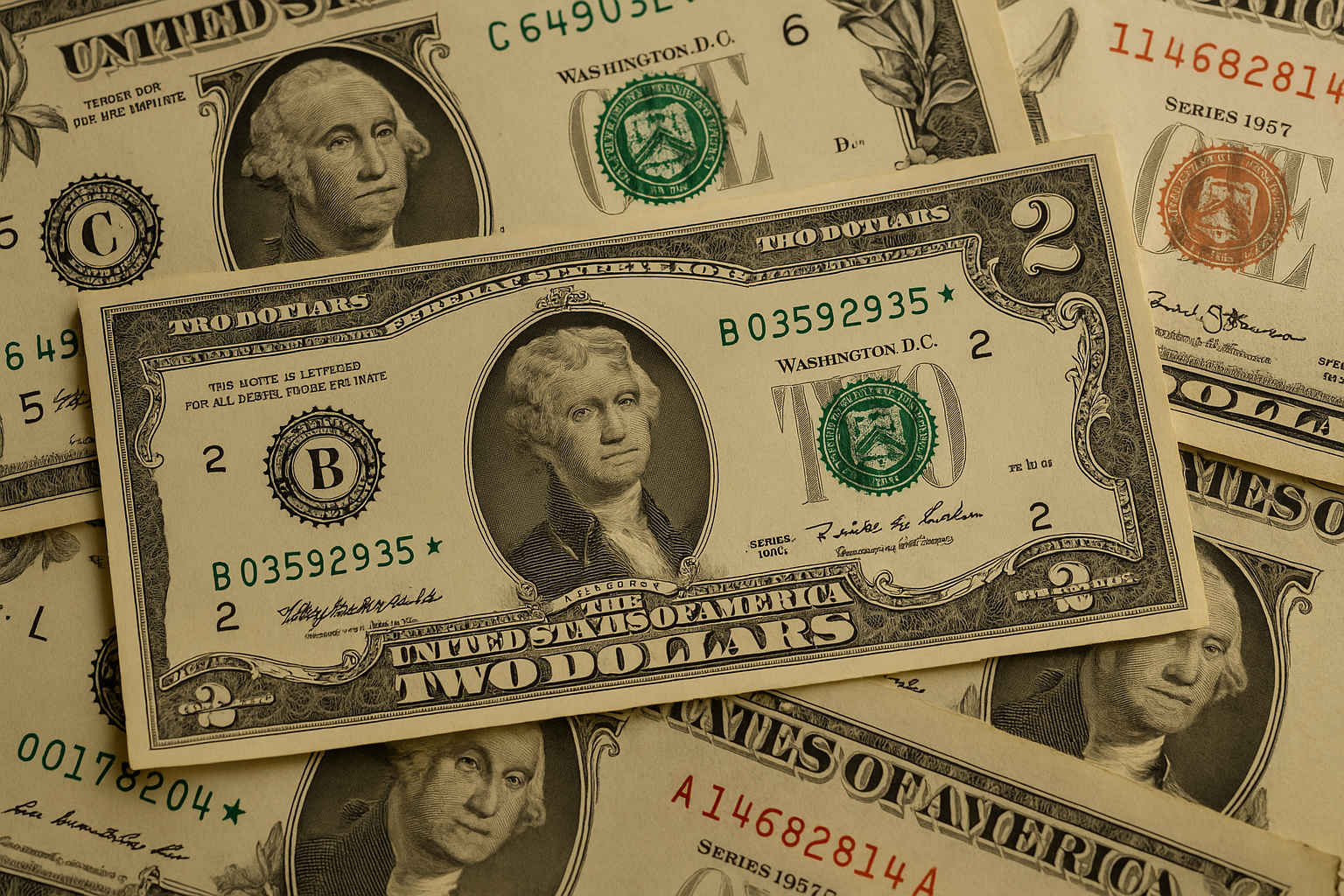The humble $2 bill has long been misunderstood. While it’s still legal tender and printed by the Bureau of Engraving and Printing, most Americans rarely see one in circulation. Yet collectors know something others don’t: some $2 bills are worth far more than face value. From rare series to printing errors, there are multiple reasons why it’s time to check your wallet or old drawers for one of these hidden gems.
Here are seven compelling reasons why you should discover the true worth of a $2 bill today.
1. Some $2 Bills Are Worth Thousands
While many $2 bills are worth $2–$5, others — particularly older series or rare varieties — can fetch hundreds or even thousands at auction. For example, an 1890 Treasury Note can be worth over $2,500, and a 1928-B Legal Tender Note in top condition can sell for $1,000+. Fancy serial numbers, misprints, and star notes also increase value.
2. Star Notes Are Highly Collectible
If your $2 bill ends with a star (*), you may be holding a replacement note — printed in smaller quantities to replace defective notes. $2 star notes are often more desirable due to their limited runs. A 1976 star note in uncirculated condition can be worth $75–$100 or more, especially with a fancy serial number.
3. Low Serial Numbers Add Huge Premiums
Bills with serial numbers like 00000001, 00001234, or 00002222 are considered fancy serial numbers and command higher prices. Even if your bill is from a recent year, a unique or low serial number can make it 10x more valuable to collectors.
4. Older Series Have Historical Value
Collectors are particularly interested in older series like 1928, 1953, and 1963. These Legal Tender Notes feature a red seal and historical signatures from Treasury officials. A 1928-G in crisp condition can sell for $200–$500, especially if certified by a currency grading service.
5. Misprints and Errors Boost Value
Printing errors on $2 bills — such as off-center printing, misaligned serial numbers, or ink smudges — can be extremely rare and desirable. Depending on severity, a $2 error note can be worth several hundred dollars or more. Always check for oddities before spending or selling.
6. Modern Notes Are Still Collectible
Even modern $2 bills, such as those from the 2003, 2009, 2013, or 2017A series, can be collectible if they’re in uncirculated condition or feature star notes or fancy serials. Since these are still being printed in small batches by the U.S. Mint through the Bureau of Engraving and Printing, collectors often hoard new issues by district and plate number.
7. They’re a Perfect Entry Point for New Collectors
Unlike some rare coins or high-value notes, $2 bills are still accessible for new and casual collectors. You can buy circulated ones for $2–$3, or explore star notes and fancy serial numbers for a slightly higher investment. They’re historical, educational, and eye-catching, making them a fun way to introduce younger collectors to numismatics.
Conclusion
The $2 bill may be rare in circulation, but in the world of currency collecting, it’s a powerhouse. From star notes and errors to historical series and fancy serials, its value goes far beyond its denomination. Whether tucked in a book, stored in a safe, or handed to you in change, don’t overlook the value of this quiet collector favorite — you might just have a valuable note in your pocket.
FAQs
What is the most valuable $2 bill?
The 1890 Treasury Note and certain 1928-B red seal Legal Tender Notes are among the most valuable $2 bills, selling for $1,000+.
Are $2 bills still printed?
Yes. The Bureau of Engraving and Printing still prints $2 bills periodically, though in smaller amounts than other denominations.
How can I tell if my $2 bill is valuable?
Check the series year, serial number, star status, and condition. Older or unique versions can carry significant collector value.

I have a red seal with B Serial number 1928 c.. all the four corners have been cut off! I have heard a few different reasons for the corners removal such as bad vudo. Any insight?